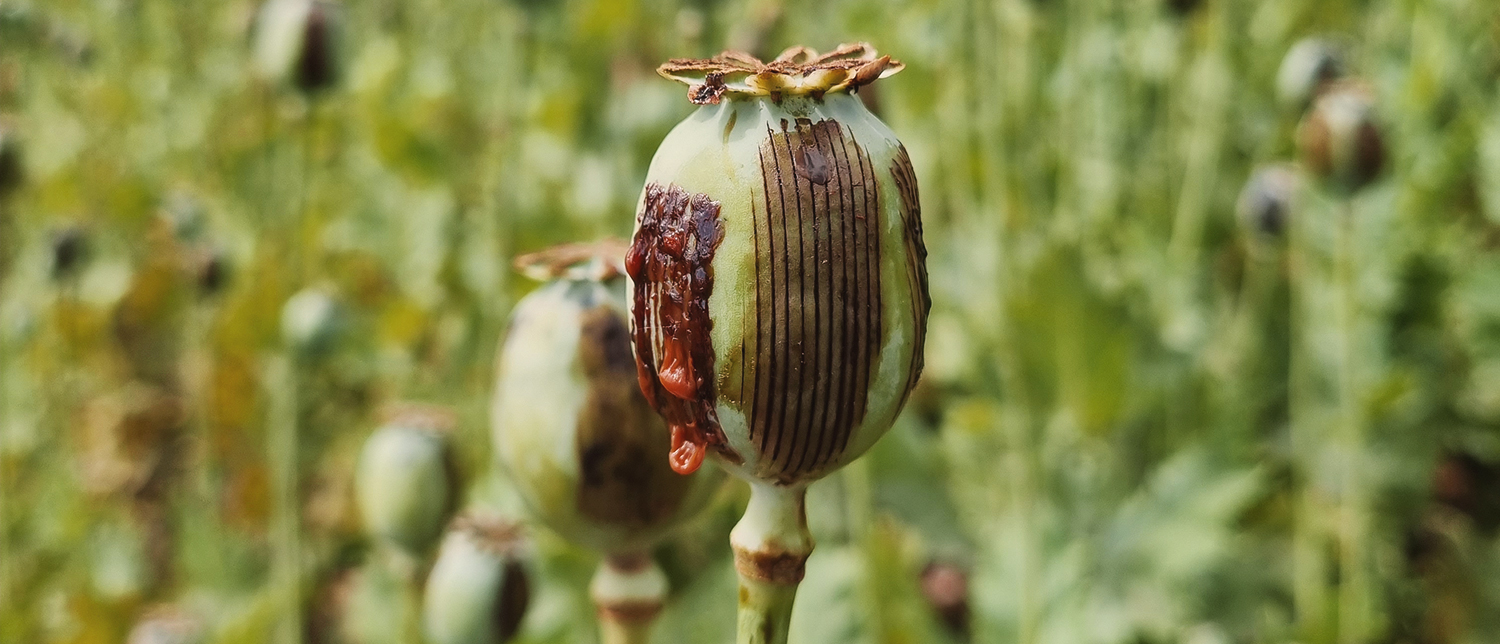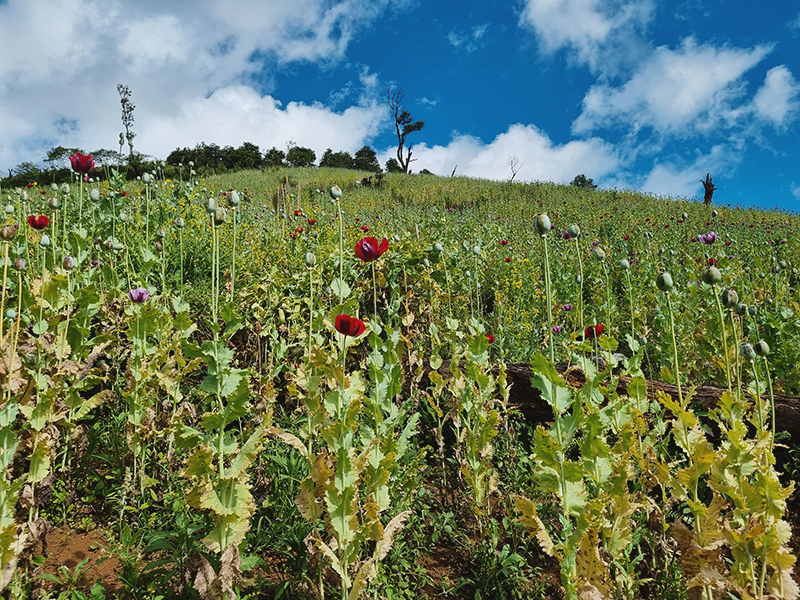

Bangkok (Thailand), 26 January 2023 – In its newest survey on opium cultivation in Myanmar, released in Bangkok today, the United Nations Office on Drugs and Crime (UNODC) estimates poppy cultivation to have increased by 33 per cent in comparison to the previous season.
The results of the 2022 opium survey for Myanmar, which covers the first season following the military takeover in February 2021, also point towards more sophisticated farming practices and concentration of opium poppy cultivation.
UNODC Regional Representative Jeremy Douglas remarked, “economic, security and governance disruptions that followed the military takeover have converged, and farmers in remote, often conflict-prone areas in northern Shan and border states have had little option but to move back to opium.”
In 2022, the area under opium poppy cultivation in Myanmar was estimated at 40,100 hectares. This estimate is 33 per cent – about 10,000 hectares – more than in 2021, reversing the downward trend that started in 2014.
The increase was recorded against the backdrop of significant social, economic, security and governance disruptions. It was likely due to two main factors: the increased size of fields, and the detection of opium poppy hotspots, translating into a higher overall estimated area under opium poppy cultivation.
Typically, most opium poppy plots detected in Myanmar in the past were small, poorly organized, and away from villages and roads, with relatively low cultivation density when compared to most other licit cash crops.
However, the evidence collected in 2022 points towards increasing sophistication in poppy cultivation practices. Newly sampled areas reveal more cultivation in high-density poppy cultivation hotspots.
In some regions of the country, poppy cultivation is on the up and poppy fields are getting larger. In Shan State, field size increased by more than 30 per cent compared to 2021.
In some regions, field research identified well-organized and high-yield plots. In East Shan, the numbers of observed capsules per plot grew 44 per cent and their average volume more than doubled, translating into higher overall yields.
National yield estimates indicated an average of 19.8 kilograms of opium per hectare of poppy – the highest-ever estimates in Myanmar since UNODC started measuring.
National potential opium production in 2022 was estimated to be about 790 metric tonnes. Though this estimate is still below a recent peak in 2013 of 870 metric tonnes, it is nearly double the estimates for 2020 of around 400 metric tonnes, which represented the nadir of a recent historic downward trend.
The increase in production was most pronounced in North Shan, where field data confirmed very healthy, organized and dense poppy fields. In Shan State, which accounts for 84 per cent of the total estimated area of poppy cultivation, production approximately doubled to some 670 tonnes when compared to 2021.
Furthermore, eradication efforts appeared to have decreased by 70 per cent year-on-year. 1,403 hectares were reported as eradicated in 2022.
While Myanmar’s licit economy remains fragile, the income from opiates is gaining in importance. Average farm-gate prices of opium at harvest time increased by 69 per cent year-on-year. This, in combination with higher production, meant farmers earned more than twice as much from opium in 2022 as in the previous year.
Yet the farm-gate value only represents a small share of the overall income from opiate manufacture and export. The estimated value of the Myanmar opiate economy ranged between USD 660 million to USD 2 billion, representing 1-3 per cent of Myanmar’s 2021 GDP.
Sharp economic contractions left Myanmar’s economy critically weak in the aftermath of the COVID-19 crisis. These, along with the military takeover in early 2021, may have helped to push rural households to rely more on opium, resulting in the expanded and more intense poppy cultivation and reversal of the downward trends of 2014-2020.
Continued political instability since the coup, ongoing increases in global prices of fuel and fertilizer, a weak economy, inflation, and very high farm-gate prices for opium can together provide a strong incentive for farmers in Myanmar to take up or expand opium poppy cultivation.
“At the end of the day, opium cultivation is really about economics, and it cannot be resolved by destroying crops which only escalates vulnerabilities,” said Douglas. “Without alternatives and economic stability, it is likely that opium cultivation and production will continue to expand.”
A continued resurgence of cultivation will have significant impact on the wider drug economy centred around the lower Mekong region. Strengthening the socio-economic resilience and basic livelihoods of farming communities will be critical to countering the renewed momentum in poppy cultivation, and support farmers living at the nexus of humanitarian, development, and conflict crises.
It will be critical to continue monitoring the opiate economy to ensure these farmers can be factored into broader policy discussions within the region and beyond.